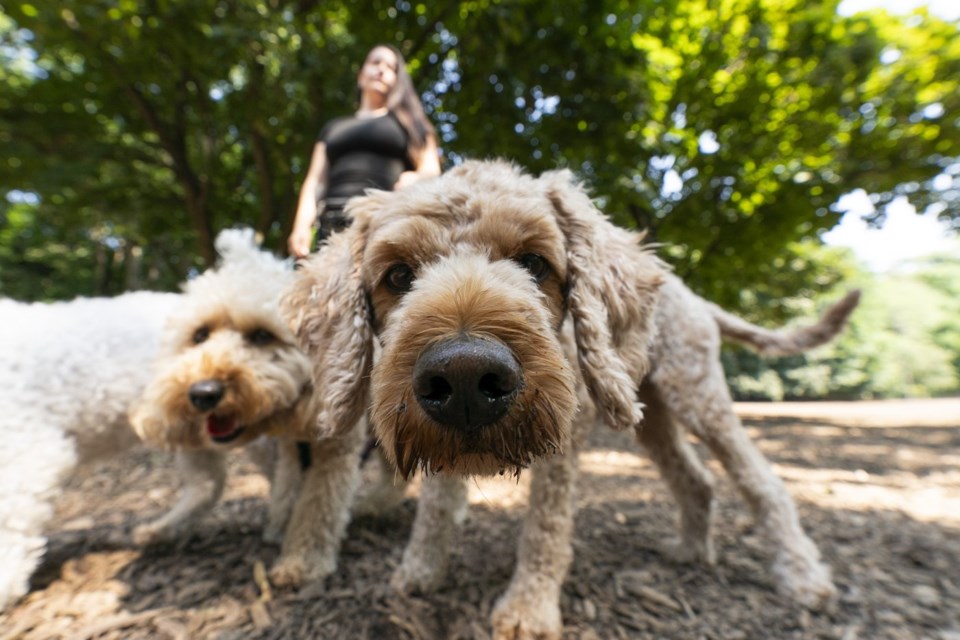Matt Perrault has shipped animals in and out of Canada on behalf of owners for more than two decades, handling creatures ranging from birds to bearded dragons, rabbits and ferrets.
But lately, it's requests to haul cats and dogs that have been raining down on him.
"It's been growing," said the owner of Ottawa-based emBARK Pet Transport. "Lots of people are moving for work. And some people just want to be with their dogs on trips," he said.
"It's like their baby."
Pet travel has grown by leaps and bounds in recent years. The number of dogs coming into Canada each year — temporarily, permanently or returning from an adventure abroad — rose by more than 400 per cent between 2013 and 2019, when it hit an estimated 37,400, according to the Public Health Agency of Canada.
While owners seem eager to make the journey, crossing a border with their furry friend is not always easy. The process can be finicky and drawn-out, as authorities "change requirements all the time," Perrault said.
Canadians travelling with animals face a growing thicket of entry rules that vary drastically from country to country, with some demanding a bewildering array of documents, strict time limits and even colour-specific ink in order to import a pet — be it for a day or a lifetime.
“There’s a lot of logistics when going to certain countries,” said Arlene Lebovic, founder of Your Dog Butler, which helps owners transport their pets.
As of August, Canadians carrying their canines into the United States must complete a free online form beforehand. The dog also must be at least six months old and have a microchip detectable via scanner to identify them.
Destinations with the tightest restrictions include the United Kingdom, Australia, New Zealand, Hong Kong, India and the United Arab Emirates.
Pets bound for countries other than the U.S. typically need an international health certificate issued by a licensed veterinarian — the exam price often starts at around $50. The certificate must then be approved by a Canadian Food Inspection Agency vet, a sign-off done in person for a $22 fee at more than 50 federal offices across the country.
Many Canadians are familiar with pet travel.
An Ekos Research poll commissioned by the federal inspection agency last year found 56 per cent of respondents owned pets — mainly dogs and cats. More than one in six pet owners said they had travelled abroad with their four-legged friends.
That suggests several million Canadians have travelled with pets, a figure that is likely to climb alongside growing ownership.
The COVID-19 pandemic saw a spike in the number of imported canines, as more Canadians became pet parents amid the loneliness of social distancing and the prevalence of remote work.
For pet shippers, one of the biggest challenges is time.
Some areas, such as Hong Kong and the UAE, demand special permits obtained in advance.
The U.K. requires tapeworm treatment for dogs between 24 and 120 hours before arrival — delayed flights can mean a second visit to the vet. Passengers also have to make sure ahead of time that the Heathrow Animal Reception Centre, where pets are briefly held on arrival, will have enough room.
The Brits have another quirk, too.
“All the documents need to be completed in blue ink,” said Dayana Pak, owner of Relopet International. Otherwise, the Canadian Food Inspection Agency will “send you back and ask the veterinarian to redo everything,” she said.
For Australia, experts recommend a more than half-year period to prepare all necessary health tests and paperwork. Dogs whose rabies vaccination status has lapsed — even by a day — must go through a process that takes about seven months.
All dogs and cats coming to Australia or New Zealand from Canada are also bound for a quarantine of at least 10 days.
“A tiny mistake, like even maybe one digit off from a microchip number, will cause the pet to be detained in quarantine for God knows how many days or returned back to Canada,” Pak said.
Then there’s the question of travel mode.
Despite the recent rule changes, dogs rolling into the U.S. by car enjoy a straightforward process, with no vet-approved health certificate needed. But air travel is more complicated.
Airlines require a health certificate. Most allow passengers to bring their dog, cat or even bird on board if it fits easily in a carrier under the seat in front. Larger dogs can be checked as baggage for a fee — between $105 and $319 at Air Canada — so long as they fall under the 100-pound weight threshold and have a travel crate, with some blackout periods during peak travel times.
However, countries such as the U.K., Hong Kong, Australia and New Zealand require all dogs entering by plane to do so as cargo, retrievable at an airport’s freight facilities.
“It’s as if you’re sending presents to your loved one across the sea,” said Perrault.
Here, too, complications can arise.
Some airlines require a customs broker to meet the plane at the airport. Air Canada only ships canine cargo to Los Angeles, Chicago and Miami.
"This is because these stations have our own staff, giving us full control of the process," said Air Canada spokesman Peter Fitzpatrick.
Pet shipments are called off if the temperature tops 29.5 C, Perrault noted late last month.
"Miami right now, it’s too hot.”
This report by The Canadian Press was first published Sept. 29, 2024.
Christopher Reynolds, The Canadian Press



